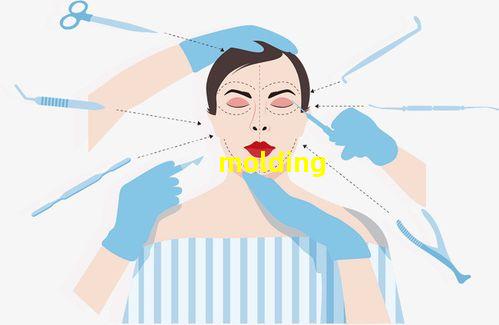








Introduction to Plastic Molding Processes
Plastic molding, also known as injection molding or plastic injection molding, is a manufacturing process used to create plastic parts in large quantities. It involves injecting molten plastic into a mold cavity, allowing it to cool and solidify, and then removing the finished product from the mold. This process is widely used in various industries, including automotive, electronics, and consumer goods.
Mold Design
The first step in plastic molding is mold design. A mold, or tool, is a customized device made from metal that determines the shape and size of the final plastic product. This design includes various features, such as ejector pins, cooling channels, and parting lines.

Mold Making
Once the mold design is finalized, the next step is mold making. Skilled technicians use computer-aided design (CAD) software and CNC machines to create the mold. The mold is typically made from steel or aluminum and consists of two halves - a core and a cavity.
Injection Molding Process
During the injection molding process, plastic pellets are fed into a heated barrel and melted. The molten plastic is then injected into the mold cavity under high pressure. Once the plastic cools and solidifies, the mold is opened, and the finished part is ejected.
Finishing and Quality Control
After the parts are ejected from the mold, they undergo post-processing, which may include trimming, deburring, and surface finishing to remove any imperfections. Quality control checks are performed at each stage of the process to ensure the final product meets the required specifications.
In conclusion, plastic molding is a complex and precise manufacturing process that allows for the production of high-quality plastic parts. Careful mold design, mold making, and attention to detail in the injection molding process are crucial to achieving successful results.
常见的模具热处理工艺
模具热处理是指通过高温加热和冷却处理,改变模具材料的组织结构和性能,以提高其强度、硬度、耐磨性和使用寿命。常见的模具热处理工艺包括以下几种:
1. 淬火: 将模具加热至临界温度,然后迅速冷却,通过非均匀组织转变使模具材料获得较高的硬度和强度。
2. 回火: 在淬火后的模具上进行加热处理,使材料内部的应力得到缓解,提高其韧性和强度,以防止模具因淬火产生的脆性。
3. 正火: 将模具加热到临界温度并持续一段时间,然后冷却,通过调整组织结构来提高模具的硬度和强度。
4. 等温淬火: 模具在高温下保温一段时间,然后再进行淬火处理,以获取均匀的组织结构和良好的综合性能。
5. 低温淬火: 模具加热到较低的温度,并进行淬火处理,以提高其耐磨性和较高的强度。
模具热处理技术的应用可以大大提高模具材料的性能和使用寿命,从而提高生产效率和产品质量。在模具制造领域,合理选择合适的热处理工艺对于模具的质量和寿命非常重要。

模具术语中英文对照
在模具制造领域中,模具术语是非常重要的,了解这些术语将有助于提高我们对模具制造的理解。以下是一些常见的模具术语及其中英文对照。
1. 模具(mold):用于制造特定形状的工具或设备。
2. 注塑(injection molding):将熔化的材料注入模具中,使其在模具中凝固并形成所需的产品。
3. 钳口(gate):注塑成型中熔融塑料进入模腔的入口。
4. 弹簧板(ejector plate):用于从模具中推出注塑件的移动部件。
5. 冷却水道(cooling channel):通过在模具中设立的管道,用于通过循环的冷却水来控制注塑件的冷却时间和温度。
6. 气动顶出(air ejection):使用空气压力将已注塑成型的产品从模具中顶出。
7. 可调冷却器(adjustable cooler):用于调节冷却水的流量和温度,以保持注塑模具的稳定温度。
8. 导柱(guide pillar):支撑和引导模具的构件。
9. 模腔(cavity):模具中用于成型的空腔。
10. 脱模剂(mold release agent):涂在模具表面,以确保注塑件从模具中顺利脱离的物质。
以上是一些常见的模具术语及其中英文对照。通过了解这些术语,我们可以更好地理解模具制造的过程,并在相关领域中进行更有效的交流和合作。

模具加工的概述
模具加工是制造工业中非常重要的一个环节,它涉及到了各种各样的生产过程。模具加工工艺及流程是指利用数控机床对材料进行加工和成型,以制造出各种不同形状和精度要求的模具。下面我们来简单了解一下。
模具加工工艺
模具加工工艺一般包括以下几个步骤:设计模具结构、制定加工工艺、准备加工图纸、准备加工设备、进行加工操作、进行质量检验。
模具加工流程
模具加工的具体流程可以大致分为以下几步:根据模具的设计要求,制定加工计划,包括材料选择、加工工艺等;然后,准备好所需的加工设备和工具;接下来,根据加工图纸,进行材料的切割、车削、铣削等加工操作;进行质量检验,确保模具的精度和质量。

以上就是关于模具加工工艺及流程的简单介绍,模具加工是一个复杂而细致的过程,需要专业的技术和设备支持。通过不断的改进和创新,模具加工技术将为制造业的发展提供更强大的支持。